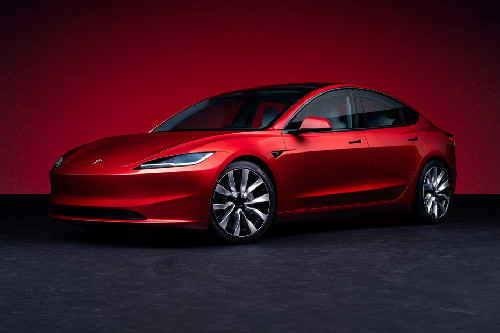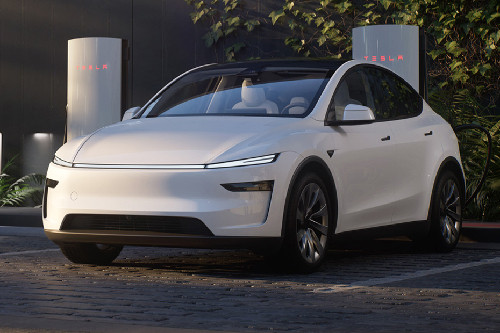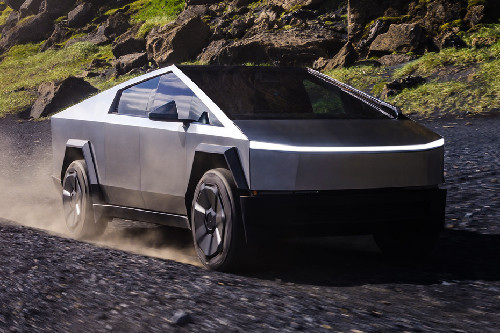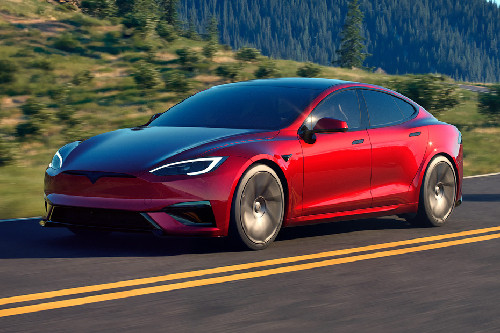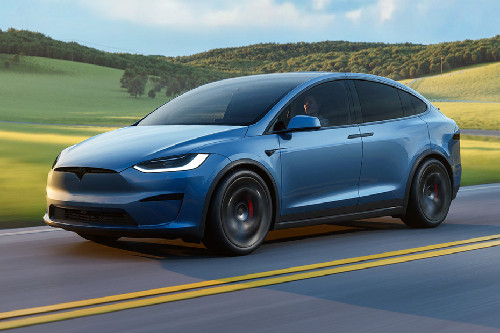Tesla Supercharger vs Public EV Chargers in UAE – What's the Difference?

- KEY TAKEAWAYS
- Types of EV Charging
- Level 1 Charging
- Level 2 Charging
- Level 3 Charging
- What Are Tesla Superchargers?
- How do they work?
- Tesla Supercharger in the UAE
- Key Features of Tesla Superchargers
- Public Chargers
- Major Networks:
- Understanding Their Function
- Comparison: Tesla Superchargers vs Public EV
- Everyday Use Cases
- Summary
- Bright Future
- Conclusion
Abu Dhabi: Just like the fast development of conventional IC engine-led transportation boom made fuel stations ubiquitous, the arrival of electric vehicles is making charging stations a new automotive industry-ready. As the number of EVs grows on the roads of the Emirates, the ecosystem around them starts to take off. As a result, in 2025 than ever, the number of car charging stations is gaining momentum across the UAE. Take the streets of Dubai Marina to the highways connecting Abu Dhabi and Al Ain, EVs are becoming everywhere to be seen Whether it's a Tesla Model 3, a Porsche Taycan, a Nissan Leaf, or new Chinese brands, car buyers are exploring them all in a bid to switch towards cleaner mobility.
KEY TAKEAWAYS
What is the main difference between Tesla Superchargers and public EV chargers in the UAE?
Tesla Superchargers are proprietary DC fast-charging stations exclusively for Tesla vehicles, while public EV chargers are available for all electric vehicles and offer varying charging speeds.Which is more cost-effective, using Tesla Superchargers or public EV chargers in the UAE?
Public EV chargers can be more cost-effective, with many offering free or subsidized charging, while Tesla Superchargers cost between AED 0.50 to 0.60 per kWh.Everyone out there planning to buy their next car as an EV, or if you’ve already been in the process of buying one, the biggest enabler in your ownership is the charging facility. Right now, the UAE has two primary charging ecosystems: Tesla's proprietary Supercharger network and public EV charging stations operated by providers like DEWA (Dubai Electricity & Water Authority), ADDC (Abu Dhabi Distribution Company), and private operators. Both are here to serve EV owners with easy charging with speed, at an affordable price and a satisfactory user experience determined by the right compatibility.
To help you, we take a deep dive into Tesla Superchargers and public EV chargers in the UAE to tell you what works best. And, whether you own a Tesla or wish to buy one or drive other than any other brand of EV, this will help you make the best decision for your convenience and hassle-free ownership.
Types of EV Charging
If you’re getting your first EV or have never experienced an EV before, here are some basic details. Today, primarily a car can be charged at three different speeds.
Level 1 Charging
Right at the beginning basic home charging is deployed at your residence, where the car resides, the most connected to your private electric outlet. The base level means this is the slowest, ranging anywhere between 5–8 km of range per hour. But this suits as an overnight charging at home when time isn’t a big concern.
Level 2 Charging
The Level 2 charging uses alternating current ( widely known as AC) and is the most common type at most of the public charging stations, workplaces, and home wall boxes. It typically delivers 7–22 kW of power, which means nearly 25–70 km of range per hour, based on factors like charger capacity and the vehicle's onboard charger.
Level 3 Charging
This is simply called a fast charger, using direct current (referred to as DC). Fast chargers overcome your vehicle's onboard AC-to-DC converter and provide an electric supply directly to the battery. The example of fast chargers is Tesla Superchargers and public DC fast chargers, which are known to offer 50–250 kW or more. Topping up about 200 plus km in a matter of 15–30 minutes.
This gives you a basic idea about the types of charger, their utility and capacity. Moving forward, we explore how Tesla Superchargers and public EV chargers come into the picture across the UAE's EV ecosystem.
What Are Tesla Superchargers?
Even if you’re not an EV user or have no firsthand experience, you may have heard of Tesla Superchargers: They’re literally how the iconic car brand has made EVs not only practical but popular among buyers and sceptics alike, the brand essentially founded them, and are proprietary DC fast-charging stations built exclusively by Tesla for Tesla vehicles (though some locations are now opening to other EVs in select markets). Not just that, but they have proven to be one of the most cutting-edge, sophisticated and extensive fast-charging networks in the world. Essentially, Tesla makes sure customers who choose its car are well taken care of when it comes to using an EV through its own charging stations.
How do they work?
Another Tesla special experience, when you pull into a Supercharger station, the experience is seamless, something car owners over the years have got highly accustomed to. Nothing complex, pretty simple and straightforward. Just get to the booth, plug in the charging into the socket, and that’s it. The charging begins automatically. No human intervention, like swiping a card, scanning a QR code, or even an app to initiate charging. How? Basically, the Supercharger is designed to communicate directly with your Tesla through the charge port, where authenticating and billing are integrated superbly to your payment method automatically.
Tesla Superchargers can top up to 275 kilometres of range under 15 minutes, which makes them a perfect pitstop for long-distance travel or even city use for a quick break. The charging speed is determined by your car’s battery's current charge level, temperature, and how many vehicles are sharing power at the station, etc. 
Tesla Supercharger in the UAE
While Tesla has been in the UAE for years, the sales volume of the automaker is expanding across various cities. And to cater to such a wide customer base, it is expanding its Super Charger station across regions, beyond Dubai and Abu Dhabi, in Sharjah, Ras Al Khaimah, Ajman, Al Tiwayya, Fujairah and several major highways across the Emirates. All V2 Superchargers in the United Arab Emirates are equipped with dual-cable posts to accommodate both DC Type 2 and CCS Combo 2 charge-ports, offering compatibility for Tesla's current generation cars operating in the region.
Key Features of Tesla Superchargers
Speed and Power: Most UAE Superchargers offer up to 250 kW of power, but most of the time these relay charging speeds depend on your car's model and battery condition. You can easily charge a Tesla Model 3 Long Range anywhere between 10% to 80% in about half an hour.
Ease of Use: When you locate a Supercharger through Tesla's built-in App, the car intuitively precondition the battery to a precise charging temperature for the highest charging speeds, solid cutting-age.
Perfect Integration: Remember, the Supercharger network is fully integrated into Tesla's maps. What it does is display live data like availability, number of open stalls, and guiding you to the nearest station when you want to.
Highly Dependable: What sets Tesla Supercharger apart from any other public chargers are the factors like reliability and authenticity, they have been highly regarded for uptime and trustworthiness. If a particular parking station or booth is unavailable for whatever reason, it will show up clearly in the app to avoid any inconvenience.
Exclusive Experience: Tesla makes sure their Supercharger is located mostly around the most convenient places, so that while the car is charging, you can access amenities like restaurants, shopping centres, and rest areas. This makes them extremely flexible, accessible, and productive.
Public Chargers
While Tesla is known for its highly popular Superchargers, they are largely for its own cars. But to enable higher penetration of EVs, there are public EV chargers across the country. These are established and run by government utilities, private businesses and also service providers that target every brand. They’re really the major factors in universal adoption of EVs in the Emirates, and costly to expand with many players entering the fray with huge potential for growth
Major Networks:
- DEWA EV Green Charger (Dubai): They’re the early movers in this space, established decades ago in 2025, and operate 400 stations that can accommodate 740 charging booths simultaneously. And, the company is aggressively expanding this number in 2025 across key locations, including Dubai Mall, Mall of the Emirates, City Walk, La Mer, Kite Beach, major hotels, business districts, and government campuses, basically all the locations where large cars gather.
- Abu Dhabi Distribution Company (ADDC): Another major company that runs EV charging stations in Abu Dhabi at various prominent players including Yas Mall, Abu Dhabi Mall, Corniche, Saadiyat Island, and Al Ain. Abu Dhabi National Oil Company and Abu Dhabi National Energy Company have set an ambitious target of deploying 70,000 chargers across the emirate by 2030, with a goal to take the country towards sustainable transportation.
- Private Operators: Besides government agencies, private players are also entering the space, and there are prominent global companies like Siemens, Emirates National Oil Company, and Cafu that provide fast and mobile charging solutions. Many hotels and malls are also stepping up to serve their EV customers with charging facilities at their premises.
Understanding Their Function
As we have seen, Tesla’s seamless plug-and-charge system, public chargers often operate differently. To use the charging service of these companies, you need to access them through mobile apps, the DEWA Smart App or PlugShare. Once you locate the station, you need manual intervention by plugging in your EV, and need to authenticate via QR code, RFID card, or app, and manually punch both start and end sessions. DEWA chargers connect to a Charge Point Management System (CPMS), where real-time availability can be accessed through the app.
Since all brands can access public chargers, they serve a great benefit to all EV owners who commute daily or go shopping or attend business meetings in the city. And, they’re spread across the length and breadth of the cities in the UAE.
Comparison: Tesla Superchargers vs Public EV
|
Criteria |
Tesla Superchargers |
Public Chargers |
Winner |
|
Charging Speed |
150–250 kW, adds 200–275 km in 15–20 mins, 80% in ~30 mins |
AC: 7–22 kW (25–90 km/hr), DC fast: 50–150 kW |
Tesla for speed |
|
Coverage & Availability |
10–15 stations on major highways, reliable |
400+ locations across Dubai and UAE, varied reliability |
Public chargers (reach), Tesla (reliability) |
|
User Experience |
Seamless “plug and charge,” auto billing, real-time info |
Requires apps/RFID, varies by network |
Tesla for ease and consistency |
|
Compatibility |
Tesla only in UAE, some markets opening |
Universal (Type 2, CCS, CHAdeMO connectors) |
Public chargers |
|
Cost |
AED 1.2–1.8 per kWh, idle fees |
Many free/subsidized; commercializing |
Public chargers for value (currently) |
|
Charging Strategy |
Best for highway trips and quick top-ups |
Best for daily, destination, urban charging |
Depends on use: Tesla for travel, public for routine |
|
Future-Proofing |
Expanding V3 network; may open to non-Tesla EVs |
ADNOC & TAQA plan 70,000 stations by 2030 |
Both advancing; public scaling faster |
Everyday Use Cases
|
Use |
Best Solution |
|
1. Daily Commuting in Dubai |
Charge overnight at home; use public AC chargers for daily top-ups. Superchargers are not needed. |
|
2. Weekend Trip to Abu Dhabi |
Use Tesla Superchargers on highways. Non-Tesla cars use DC fast chargers. |
|
3. Shopping at Dubai Mall |
Public AC chargers are good for 2-3 hour parking, often free. Use Superchargers only for quick charging. |
|
4. Apartment Living without Home Charging |
Use nearby public AC chargers daily; Superchargers for quick boosts; also charge at work or malls. |
|
5. Road Trip to Oman |
Start fully charged. Tesla owners use Al Ain Supercharger. Plan charging stops carefully for other EVs outside UAE. |

Summary
Frankly, like everything else in life, charging of cars doesn’t come with a one-size-fits-all answer; and it is quite subjective as well, depending on situations, type of cars, lifestyle and travel needs.
Tesla Superchargers: Are suitable if you own a Tesla car, and drive often between cities, need fast and reliable charging, and the pricing won’t be a concern.
Choose Public EV Chargers: Ideal for non-Tesla electric car owners who mostly drive within their primary city. And, don’t mind a slower charging speed while you wait in the parking or prefer cheaper prices.
The Best Way: It is recommended that Tesla owners try to use home charging daily, and prefer using public chargers when they’re available. Utilise superchargers during long highway drives or quick top-ups when in the city. For car owners other than Tesla, it is better to install a charger at home, where the car stays most of the time, and you can charge the whole night. And, use public AC points during the day if necessary and DC fast chargers for longer trips.
Bright Future
As far as the future of EV charging in the UAE, it is nothing but bright. This optimism comes from the fact that the government and many private players are working to grow the network, and new DC fast chargers are being installed rapidly. And, better interoperability, high-tech charging, and new residential and workplace installations are seeing wider adaptability.
Conclusion
As electric vehicles become more prevalent, charging cars instead of fueling is going to be part of our daily life. And, having a robust charging network in the UAE goes a long way in making EVs affordable and accessible to a larger public. As of 2025, Tesla Superchargers are known for their speed and reliability; public chargers offer affordability and accessibility. It is the most innovative and best solution out there. However, they can’t do it alone, and so the best approach is to find a balance between private and public to provide flexibility and convenience for the larger car owners and users.
Tesla Car Models
Automotive News and Reviews
- Latest
- Popular
You might also be interested in
- News
- Featured Stories
Featured Car
- Latest
- Popular

